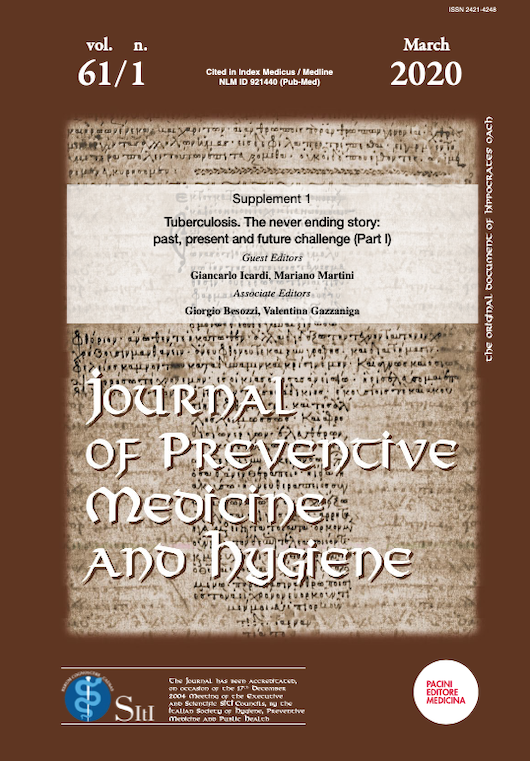Abstract
Between the end of the nineteenth century and the first half of the twentieth century, the city of Siena experienced elevated tuberculosis-related morbidity and mortality, to the point that on January 1, 1929 the newspaper La Nazione wrote that “Siena ranks second in the official TB incidence rate”.
The author presents statistical data relating to a time span ranging from 1898 to 1935, interpreting them in light of social and sanitary conditions found in the city.
The result is an exhaustive picture of the most important actions implemented at city level to prevent tuberculosis and to assist and treat the sick, such as: the creation of seaside hospices conceived by Carlo Livi for children suffering from scrofula, as well as centers committed to the prevention of childhood poverty and malnutrition; the realization of activities in the green areas of the ramparts of the Fortress, upon recommendation by great hygienist Achille Sclavo; the establishment of a Preventorium on the premises of the Monastery of Santa Maria Maddalena to accommodate children from families that included pulmonary tuberculosis patients, and countless activities carried out by the Anti-TB Dispensary.
Of particular interest is the identification of the main cause of high TB incidence in the unsanitary homes located in some sections of Siena’s district, which, in 1930 engendered a lively debate hinging upon the notion of building restoration.
References
Neri F. La tubercolosi nel Comune di Siena. Nota II (periodo 1914-1920). Atti Accad.Sci.Siena 1921; IX (XIII): 159.
Livi C. La scrofola e gli ospizii marini: lettura fatta nella Gran Sala della R. Università di Siena / per Carlo Livi. Milano: Treves; 1873: 7.
Neri F. La tubercolosi nel Comune di Siena durante il periodo 1898-1913. Firenze: Tipografia Fattori e Puggelli già Claudiana; 1915.
Londini A. La tubercolosi nel comune di Siena (periodo 1921-1935). Atti Accad.Sci.Siena 1921; XI (V): 293-323.
Martini M., Gazzaniga V., Bragazzi NL, Barberis I. The Spanish Influenza Pandemic: a Lesson from History 100 Years after 1918. J Prev. Med Hyg 2019; 60: E64-E67. DOI: http://dx.doi.org/10.15167/2421-4248/jpmh2019.60.1.1205.
Cinughi de’ Pazzi A. Case popolari in Siena. Siena: Stab. Carlo Nava; 1908.
Badaloni G., La mortalità per tubercolosi polmonare in Bologna. Boll. Sc. Med. 1905; V: 119-133.
Sclavo A. Per la propaganda igienica. Giornale della Società d’Igiene 1911: 541.
Chiurco G.A. Pernio del programma fascista senese dell’anno VII: combattere la tubercolosi. Il Popolo senese 1928; 86: 3.
Corsini F. Attività antitubercolare dal 1919 al 1940. Siena: Stabilimento grafico Combattenti; 1942: 22.
Martini M., Gazzaniga V., Behzadifar M., Bragazzi NL, Barberis I. The history of tuberculosis: the social role of sanatoria for the treatment of tuberculosis in Italy between the end of the 19th century and the middle of the 20th. J Prev. Med Hyg 2018; 59: E323-E327. DOI: http://dx.doi.org/10.15167/2421-4248/jpmh2018.59.4.1103.
Diana E. L’opera di Giuseppe Barellai nel contesto europeo dell'igiene e dell'architettura sanitaria: gli ospizi marini. Firenze: Polistampa; 2014: 135-171.
Funaioli P. I poveri bambini scrofolosi di Siena inviati all’ospizio marino di Viareggio nell’estate 1872. Siena: Stab. Tip. Di A. Mucci; 1874: 1.
Tassi F. Relazione sanitaria sui bambini poveri scrofolosi di Siena inviati all’ospizio marino di Porto Santo Stefano nell’estate del 1877. Siena: Stab. Tip. Di A. Mucci; 1878: 12.


